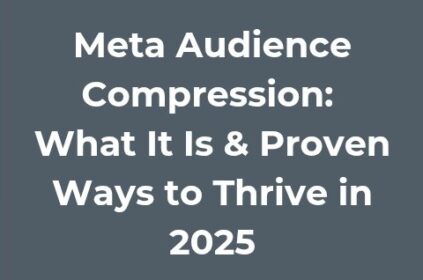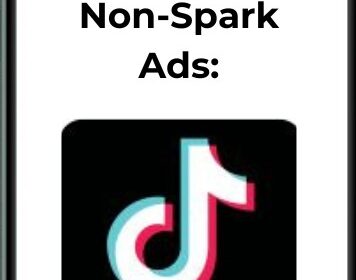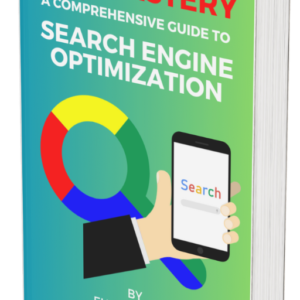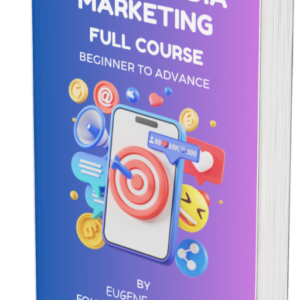Dynamic Keyword Insertion in 2025 has evolved into more than just a way to swap in search terms automatically.
While originally popularized by Google Ads, the concept now applies across Microsoft Ads, Amazon Ads, and even some programmatic platforms.
Done well, it boosts click-through rates by making ads appear hyper-relevant to user queries. Done poorly, it risks mismatched headlines, poor Quality Scores, and wasted spend.
As privacy changes reshape targeting, advertisers are under pressure to make every impression count.
Leveraging Dynamic Keyword Insertion the right way can increase ad relevance without losing brand control or violating platform policies.
Understanding Dynamic Keyword Insertion and Its Role in Ad Relevance
Dynamic Keyword Insertion is a feature that automatically replaces placeholder text in your ad with the exact keyword that triggered the ad.
In Google Ads, this is achieved using a special syntax such as {KeyWord:Default Text}. Similar functions exist in Microsoft Advertising and Amazon Sponsored Products.
The core purpose is to make ad copy feel personally matched to the searcher’s query, increasing the likelihood they click.
According to WordStream, ads with DKI have historically shown higher CTRs compared to static ads, especially in competitive markets.
However, advertisers must understand that Dynamic Keyword Insertion pulls from the keyword in the ad group, not necessarily the search term.
This means relevance depends on well-organized ad groups with closely related keywords.
In 2025, relevance also impacts ad rank and cost-per-click because platforms like Google increasingly weight Quality Score on landing page alignment, ad text match, and predicted CTR.
Using Dynamic Keyword Insertion strategically — not just to boost CTR but to improve quality metrics — can result in lower CPCs and more conversions at scale.
Structuring Campaigns for Effective Dynamic Keyword Insertion
A common reason Dynamic Keyword Insertion fails is poor campaign structure. To make it work, keywords must be tightly grouped by intent.
For example, grouping “buy running shoes online” with “discount football cleats” in the same ad group can lead to mismatched DKI headlines.
The fix is to create single-keyword or tightly themed ad groups, ensuring the keyword inserted is always relevant to the ad text and landing page.
Google’s own recommendations emphasize keeping ad groups small, often fewer than 10 keywords, when using DKI.
This helps maintain a clear thematic link between the search query, inserted keyword, and landing page offer.
On platforms like Microsoft Ads, advertisers have similar tools and should follow the same grouping discipline.
A/B testing ad groups with and without Dynamic Keyword Insertion can reveal whether the added personalization improves performance.
This test should track CTR, conversion rate, and Quality Score changes, as relevance affects both engagement and costs.
Setting Up Dynamic Keyword Insertion Correctly Across Platforms
Implementing Dynamic Keyword Insertion starts with understanding platform syntax and character limits.
In Google Ads, {KeyWord:Default Text} uses capitalization rules: “KeyWord” capitalizes each word, “keyword” keeps lowercase, and “Keyword” capitalizes the first word.
Microsoft Advertising supports similar parameters, but default text handling can differ slightly.
Amazon Sponsored Products uses keyword placeholders in ad headlines for product targeting campaigns.
Character limits still apply after insertion, so long queries can cause truncation. To avoid this, choose concise default text and avoid overly long keywords in ad groups.
For example, if your default text is “Sports Gear Sale,” and a keyword is “high performance lightweight basketball shoes for kids,” the inserted version may exceed headline limits, forcing an automatic cut-off.
Testing your ads with the longest keywords in preview tools is essential.
Proper implementation ensures your Dynamic Keyword Insertion ads display correctly, preserving both relevance and professionalism.
Balancing Automation with Brand Control
One of the main concerns with Dynamic Keyword Insertion is maintaining brand voice. Automation can insert awkward or off-brand phrases if keyword lists aren’t curated.
In competitive markets, automated insertion can even display competitor brand names if they are part of your keywords — a practice that may lead to trademark disputes.
The Google Ads trademark policy outlines restrictions on using competitor trademarks in ad text.
To maintain control, advertisers should:
#1. Regularly review keyword lists to remove inappropriate terms.
#2. Use default text that still works for all keywords in the ad group.
#3. Avoid adding broad match keywords that might trigger unrelated insertions.
Brand safety is especially important in regulated industries such as finance, healthcare, and legal services, where certain phrases can trigger compliance issues.
A thoughtful approach to Dynamic Keyword Insertion ensures you reap personalization benefits without brand or legal risks.
Integrating Dynamic Keyword Insertion with Seasonal Campaigns
Dynamic Keyword Insertion can significantly boost the performance of seasonal advertising campaigns by aligning ad copy with timely search behavior.
For example, a retailer running promotions for “Black Friday laptop deals” can use DKI to ensure that those exact terms appear in the ad headline when triggered.
The key is to create dedicated ad groups for each seasonal event, populated with tightly related keywords, so that the inserted terms always feel directly relevant to the occasion.
Default text should be chosen to still make sense once the seasonal period ends, preventing irrelevant copy from displaying after the promotion.
Seasonal DKI is not limited to retail — travel, hospitality, and event-based industries can benefit from campaigns built around holidays, school breaks, or industry conferences.
Performance tracking should be done both during and after the seasonal window to measure the lift from DKI compared to non-DKI ads.
By carefully planning keyword lists, ad scheduling, and post-season adjustments, advertisers can use Dynamic Keyword Insertion to create urgency and relevance during peak shopping or booking periods without compromising the campaign’s integrity once the season passes.
Measuring the Impact of Dynamic Keyword Insertion
Tracking the performance of Dynamic Keyword Insertion requires more than just looking at CTR.
While higher click-through rates can be a positive indicator, they don’t always lead to profitable conversions.
Advertisers should compare conversion rates, cost per acquisition (CPA), and return on ad spend (ROAS) between DKI and non-DKI ads.
Using UTM parameters or platform tracking templates allows you to segment performance data specifically for Dynamic Keyword Insertion campaigns.
Google Ads experiments can split traffic 50/50 between DKI and static ads to isolate the impact.
In a 2024 PPC survey by Search Engine Journal, 39% of advertisers reported improved conversion rates with DKI, but only when combined with tightly themed ad groups and relevant landing pages.
Measuring on multiple KPIs ensures you optimize for actual business outcomes, not vanity metrics.
Optimizing Landing Pages for DKI Traffic
Dynamic Keyword Insertion increases ad relevance, but the landing page must deliver a consistent message to maintain conversion momentum.
If the ad headline includes “Buy Red Running Shoes” but the landing page shows generic footwear, users may bounce quickly, hurting both Quality Score and ROI.
To align landing pages with DKI ads:
#1. Mirror the keyword in the headline or subheading of the page.
#2. Display matching product filters or pre-filled search results.
#3. Ensure mobile speed and UX meet Core Web Vitals standards to avoid drop-offs.
Platforms increasingly factor landing page experience into ad ranking.
Google Ads documentation confirms that relevance between ad copy and landing content can improve Quality Score, lowering CPC.
When Dynamic Keyword Insertion drives users to highly tailored pages, the performance lift compounds.
Leveraging Dynamic Keyword Insertion for Geo-Targeted Campaigns
Geographic targeting combined with Dynamic Keyword Insertion allows advertisers to deliver ads that feel locally tailored, improving engagement and click-through rates.
For example, a service business could structure ad groups with location-specific keywords such as “plumbing repair in Austin” or “emergency electrician in Denver,” ensuring the city name is dynamically inserted into the ad headline.
This level of personalization reassures users that the business operates in their area and can respond quickly to their needs.
To implement this effectively, advertisers should create separate campaigns or ad groups for each targeted region, using localized landing pages to match the dynamically inserted terms.
This approach also helps improve Quality Score, as the ad copy and landing page are both closely aligned with the searcher’s intent and location.
Geo-targeted DKI is particularly effective for multi-location brands, franchise operations, and region-specific service providers.
Performance should be tracked on a per-location basis to identify which areas respond best to DKI, allowing for budget allocation that favors high-performing markets.
This combination of location targeting and dynamic personalization can lead to more qualified clicks and higher conversion rates.
Avoiding Common Dynamic Keyword Insertion Mistakes
Dynamic Keyword Insertion mistakes often come from neglecting to preview ads for all keyword variations.
Unchecked, this can result in truncated text, awkward phrasing, or mismatched messages.
Another common issue is overuse — inserting keywords in every headline and description can feel repetitive or spammy, reducing trust.
Advertisers should also avoid using Dynamic Keyword Insertion with extremely broad match types unless there’s strong negative keyword filtering in place.
Without this, irrelevant traffic can dilute campaign performance. Microsoft Ads, for example, warns against using DKI with overly broad matches for brand safety reasons.
A disciplined approach — testing variations, curating keywords, and setting strict match types — ensures that Dynamic Keyword Insertion enhances rather than harms campaign results.
Dynamic Keyword Insertion Beyond Search Ads
While most associated with search advertising, Dynamic Keyword Insertion principles now appear in display, shopping, and even social ad platforms.
Amazon Ads allows product attributes to dynamically appear in ad text, while Facebook and Instagram Dynamic Ads use feed data to personalize creative.
Programmatic platforms offer keyword-based dynamic creative optimization (DCO) to match user intent more precisely.
This broader adoption means that advertisers can apply DKI knowledge across multiple channels, improving message consistency and personalization.
For example, an e-commerce brand could use search DKI for high-intent clicks, shopping ad dynamic titles for product feeds, and social ad DCO for retargeting audiences — all while maintaining unified campaign messaging.
Using Dynamic Keyword Insertion to Enhance Remarketing Campaigns
Remarketing campaigns often focus on audiences who have already interacted with a brand but have not yet converted.
Dynamic Keyword Insertion can make these ads more compelling by referencing the specific products, services, or categories that users previously viewed.
For instance, an e-commerce store could use DKI in remarketing ad headlines to feature the product type a user browsed, such as “Shop More Running Shoes” or “Exclusive Deals on DSLR Cameras.”
This requires segmenting remarketing audiences based on user behavior, then creating ad groups with keywords directly tied to those behaviors.
Default text should still be relevant enough to engage other segments within the same audience list.
Remarketing with DKI not only improves relevance but also creates a stronger connection between the user’s prior interest and the ad’s message, increasing the likelihood of conversion.
Tracking the performance of DKI remarketing ads versus static remarketing ads can reveal the extent of the impact on CTR and ROAS.
By pairing behavioral targeting with dynamic ad customization, advertisers can deliver remarketing messages that feel personalized, timely, and directly aligned with the user’s demonstrated intent.
Testing, Iterating, and Scaling DKI Campaigns
Successful Dynamic Keyword Insertion isn’t a one-time setup. It requires ongoing A/B testing to identify which keyword insertions actually drive profitable results.
Testing variables might include:
#1. Insertion in headline only vs. headline + description.
#2. Different default text variations.
#3. Match type restrictions.
Once winning combinations are identified, scaling can be done by duplicating high-performing structures into new markets, languages, or product lines.
Using automated rules to pause underperforming ad variants ensures budget efficiency.
Scaling also means expanding DKI to additional ad formats where available, capitalizing on personalization benefits in both search and shopping campaigns.
Conclusion
Dynamic Keyword Insertion in 2025 remains a powerful tool for advertisers seeking higher relevance and engagement, but it must be used with precision.
Well-structured campaigns, careful keyword selection, brand-safe automation, and consistent landing page alignment are critical for success.
Measuring performance beyond CTR — focusing on conversions, CPA, and ROAS — ensures that the tactic contributes meaningfully to your advertising goals.
By applying these strategies across Google Ads, Microsoft Ads, Amazon Ads, and other platforms, you can maximize the impact of Dynamic Keyword Insertion without sacrificing control over your brand voice or compliance obligations.










